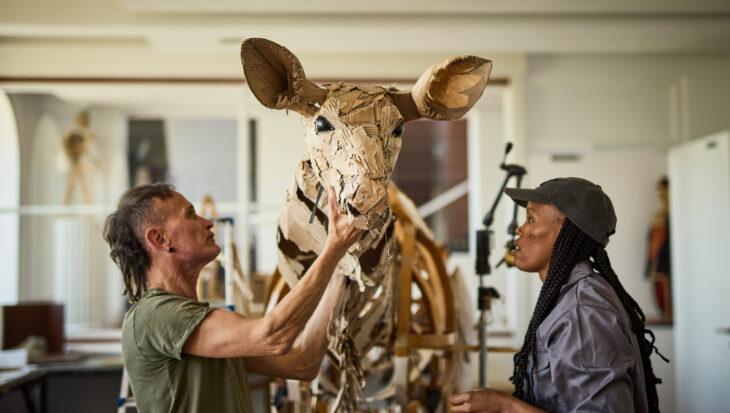‘The Herds’ will be arriving in London this Friday!
Have you heard? A breathtaking arts initiative, ‘The Herds’ will be arriving in London this Friday.
Posted 27 Jun 2025

Posted on the 15th March 2005
Jockey Club's courses are the deadliest
An analysis of literally thousands of pages of racing results has revealed that no fewer than 375 horses are raced to death every year. The most astonishing finding of Animal Aid’s survey is that the four most hazardous of all Britain’s 59 racecourses are run by horse racing’s own governing body, the Jockey Club. Cheltenham is the most deadly, followed by Aintree, Warwick and Carlisle. From just 54 days racing at Cheltenham over four seasons, there were 21 on-course deaths.
The Jockey Club has always refused to publish details of how many horses die while racing or in training – and yet it routinely claims that ‘no issue has a higher priority than the safety and welfare of the horse’.
Breaking through the veil of secrecy, Animal Aid’s report – called This Unsporting Life and published Tuesday, March 22 – exposes the dark side of British horse racing. Thirty per cent of the 375 annual fatalities, the analysis reveals, meet their end during or immediately after a race. The remainder are killed because of injuries received in training, or after being assessed by their owners as no-hopers.
This Unsporting Life shows that the majority of fatalities occur in jump racing. Horses used to be selectively bred for this sector. They were heavier-boned and more robust than the faster animals racing on the flat. Because of the increasing emphasis on speed in all racing disciplines, horses entered into jump races are now more often ‘cast-offs’ from the flat. Deaths, as a consequence, are more common.
Downhill fences are especially dangerous, notes the new Animal Aid report, because of the difficulty horses face in resisting the immense gravitational pressures. Another serious hazard are fences positioned too close to the start.
This Unsporting Life reveals that it is not unusual for two horses to die in a single race. Three fatalities at a single meeting are also common. Sixteen horses died on-course during just 16 days (from March 9 to March 24, 2004) – yet no formal action was taken. Nor was there any official response to ten on-course deaths in just eight days – from March 30 to April 6, 2002.
To drive home the reality of Thoroughbred horse suffering and death, Animal Aid has produced a powerful 90-second web film. It will be circulated via a grass roots email campaign, involving the campaign group’s thousands of supporters across the country. The shocking mini movie shows a series of real on-course equine deaths. They result from broken necks, backs, legs and heart attacks. Animal Aid has also produced a 15-minute documentary on horse deaths for the media, schools and campaigners.
Says Animal Aid Director Andrew Tyler:
“Our report reveals the deadly aspect of racing that the industry works so hard to keep secret. We demonstrate that racing is a ruthless and inherently exploitative industry that has little regard for the Thoroughbred workhorse on whom profits and glory depend.”
Have you heard? A breathtaking arts initiative, ‘The Herds’ will be arriving in London this Friday.
Posted 27 Jun 2025

As the greyhound racing industry releases its annual data on the number of dogs’ deaths, a raft of well-known names - alongside their canine friends - has called upon the Government to end greyhound racing....
Posted 26 Jun 2025
